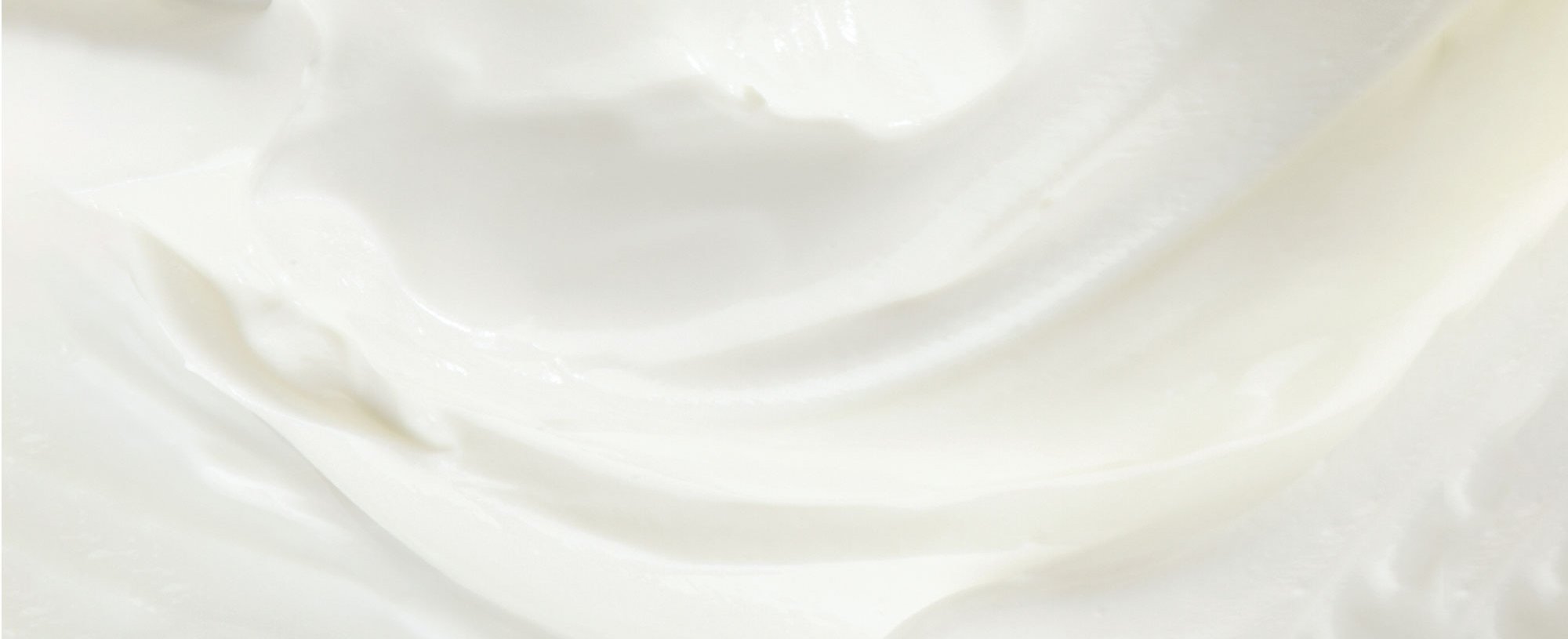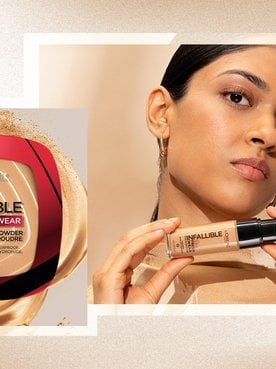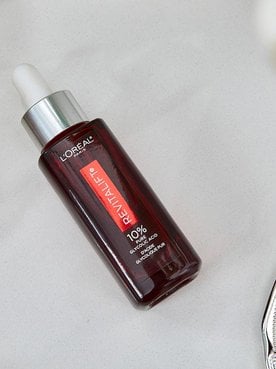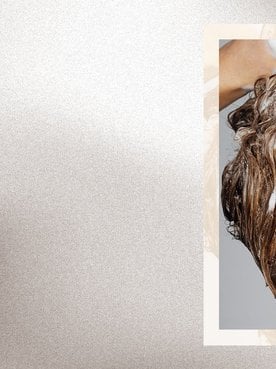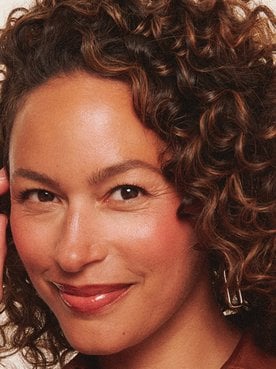By now, you probably have using self-tanner on your body down to a science. However, you may not have totally mastered how to apply self-tanner on your face, as getting a face tan be a little more daunting than applying tanner to the rest of your body. That’s because you can always cover up your legs if your faux glow turns out streaky—but it’s a little harder to hide self-tanner mistakes on your face. That being said, there are a few face tanner tips you can follow to help make applying self-tanner easy. With a little know-how, self-tanning your face can be part of your regular skin care routine. Ready to learn everything you should know before attempting to give your face a sun-kissed glow? Below, we share how to apply sunless face tanner like a pro. But first, learn about our best self-tanner for your face!
OUR BEST SELF-TANNER FOR FACE
Before we dive into how to apply self-tanner to your face, allow us to share our best product for the job! The L’Oréal Paris Sublime Bronze™ Self-Tanning Serum is a multitasking self-tanner that can be used on both your face and body. The self-tanning serum is also a prime pick because it goes on streak-free, dries quickly, and can provide long-lasting color. What’s not to like?
HOW TO APPLY SELF-TANNER ON YOUR FACE
Ready to get your face tan on? Follow the steps below!
STEP #1: CLEANSE YOUR FACE
Before you apply self-tanner to your face, cleanse your skin. Try a no-rinse facial cleanser, like the L’Oréal Paris Micellar Cleansing Water Complete Cleanser Waterproof - All Skin Types, which removes makeup (even waterproof!) and cleanses skin of dirt and impurities. Just sweep a micellar water-soaked cotton pad across your face, and you’re ready to move on to the next step.
STEP #2: GENTLY SCRUB YOUR SKIN
If you’re a faux tan fan, then you know that one of the most important steps you can take before application is exfoliating. Dead skin cells can build up on the surface of your skin, and this can cause your self-tanner to go on streaky. So, use a face scrub, like the L’Oréal Paris Pure-Sugar Resurface & Energize Kona Coffee Scrub or L’Oréal Paris Pure-Sugar Purify & Unclog Kiwi Scrub, to help slough away dead skin cell buildup from skin’s surface before applying self-tanner. If you’re in a rush, try an exfoliator pad like the L’Oréal Paris Revitalift Bright Reveal Brightening Daily Peel Pads. Just grab a pad and smooth it gently over your face for brighter, radiant skin.
STEP #3: MOISTURIZE
After exfoliating, apply a facial moisturizer to help create a smooth base for your self-tanner. The L’Oréal Paris Hydra Genius Daily Liquid Care - Normal/Oily Skin, L’Oréal Paris Hydra Genius Daily Liquid Care - Normal/Dry Skin, and L’Oréal Paris Hydra Genius Daily Liquid Care - Extra Dry Skin are formulated with hyaluronic acid and aloe vera water to help provide long-lasting hydration. Smooth your water-based moisturizer of choice over your face and neck to ensure all dry areas of your skin have their moisture replenished.
STEP #4: PICK YOUR SELF-TANNER—AND APPLY IT THE RIGHT WAY
It’s important to note that not all self-tanners are meant to be used on your face. Often, you’ll only want to apply them below the neck. If you want to have tan skin all over, it’s common to use one self-tanner for your face and another for your body. However, there are some multitasking options available, like the one we mentioned above.
To use, pump the serum directly into your palms and apply it evenly to your face after moisturizing. Remember to extend the self-tanner past your jawline to your neck. Otherwise, it’ll be super-noticeable that your tan is fake. Let your skin dry completely before getting dressed or applying makeup. Use daily for three days for a gorgeous-looking summer glow. Don’t forget to wash your hands after applying to avoid having stained palms! For extra protection, consider wearing disposable gloves or a self-tanner mitt to apply the product to your face.
Editor’s tip: Prefer a more gradual tan? Add a pump of the self-tanner serum to your face moisturizer for a gradual glow.
STEP #5: MATCH YOUR BODY TO YOUR FACE
The key to creating a believable-looking summer tan is applying self-tanner all over your body so that your color looks even. From your décolletage down, you can use our self-tanning serum or another one of our self-tanners to get that all-over bronzed glow. Here are our best self-tanners:
L’Oréal Paris Sublime Bronze™ Self-Tanning Water Mousse: This lightweight mousse has an invisible feel and hydrating formula that’ll leave your skin with a natural-looking sun-kissed glow.
L’Oréal Paris Sublime Bronze™ Hydrating Self-Tanning Milk Medium: The self-tanning milk is designed to gradually deliver an even, bronzed glow while softening and nourishing skin. With one use, a bronzed glow appears within hours, while continued use results in a gradually deepening skin tone.
L’Oréal Paris Sublime Bronze™ ProPerfect Salon Airbrush Self-Tanning Mist Medium Natural Tan: The quick-drying, streak-free formula of this airbrush self-tanner will give you instant color. With its 360-degree wide-angle applicator, you'll get an even application and be able to apply the sunless tanner to even the hardest areas to reach, such as the back of your legs.
L’Oréal Paris Sublime Bronze™ Towelettes for Body: These tanning towelettes are perfect for those who are traveling or looking for a convenient application method. Each towelette has enough product for one application and will result in a streak-free, natural-looking tan. The tan is also buildable so you can reach your desired level of tan.
L’Oréal Paris Sublime Bronze™ Self-Tanning Gelee Medium Natural Tan: This self-tanner moisturizes your skin while the tan develops. Simply apply it all over your body the same way you would apply a lotion, making sure not to miss any patches, and massage it onto your skin until its absorbed. Make sure to use it sparingly over areas of your body that tend to be drier like your knees, ankles, and elbows. This product can be built up to your desired level of tan by reapplying daily, and then maintained by being applied one to two times per week.
L’Oréal Paris Sublime Bronze™ Tinted Self-Tanning Lotion Medium Natural Tan: Another tanning lotion, this self-tanner is virtually fool-proof with its tinted color guard. The tint allows you to get an instant glow while also helping you to see where you've applied the lotion. The quick-drying product will leave you with a streak-free, natural-looking tan.
STEP #6: MOISTURIZE…AGAIN
Now that you have a tan face and body, it’s time to maintain that tan. The most important thing when it comes to making your self-tanner last is to keep your skin moisturized. Dry skin will not only lead to your sunless tan fading prematurely, but it can also cause it to start to appear blotchy, uneven, and cracked where skin is dry. Use the moisturizer that best suits your skin type in both the morning and night to keep your skin hydrated.
STEP #7: USE GENTLE PRODUCTS
Maintaining a faux glow on your face can be more difficult than other areas of your body because you're likely constantly putting products on your visage. From facial cleansers to face scrubs to makeup, the continuous use of products on your face can cause your tan to fade. To avoid this, use skin care products that are gentle on your skin. When it comes to removing making, try using the L’Oréal Paris Ideal Clean™ All Skin Types Makeup Removing Towelettes. These makeup remover towelettes are alcohol-free, ultra-soft, and remove all traces of makeup. Most important—they don’t dry out your skin, allowing your face to stay moisturized and (artificially) sun-kissed.
STEP #8. AMP UP YOUR MAKEUP ROUTINE
When it comes to having tan skin, you’ll want to update your makeup regimen with bronzer to help boost your bronzed complexion. Give one (or a few) of the following a try.
L’Oréal Paris True Match Lumi Bronze It Bronzer: Like a little shimmer? This powder bronzer features a flattering shimmer finish that will give your skin a lit-from-within glow. Use it on your face and body wherever you need a little bronzing action.
L’Oréal Paris Summer Belle Makeup Bronze Please!: This all-over matte bronzer can also be used on your face and body. The powder formula is packed with blendable, long-wearing pigments for natural-looking, sun-lit color.
L’Oréal Paris True Match™ Lumi Glotion Natural Glow Enhancer: This lightweight liquid luminizer has a hydrating formula that can be used on your face and body. The liquid bronzer will leave your skin with sheer bronze color and a dewy finish.
Enjoyed these self-tanning tips for your face? Check out our article, The Best Self-Tanner for Every Situation, for more sunless tanning advice.
